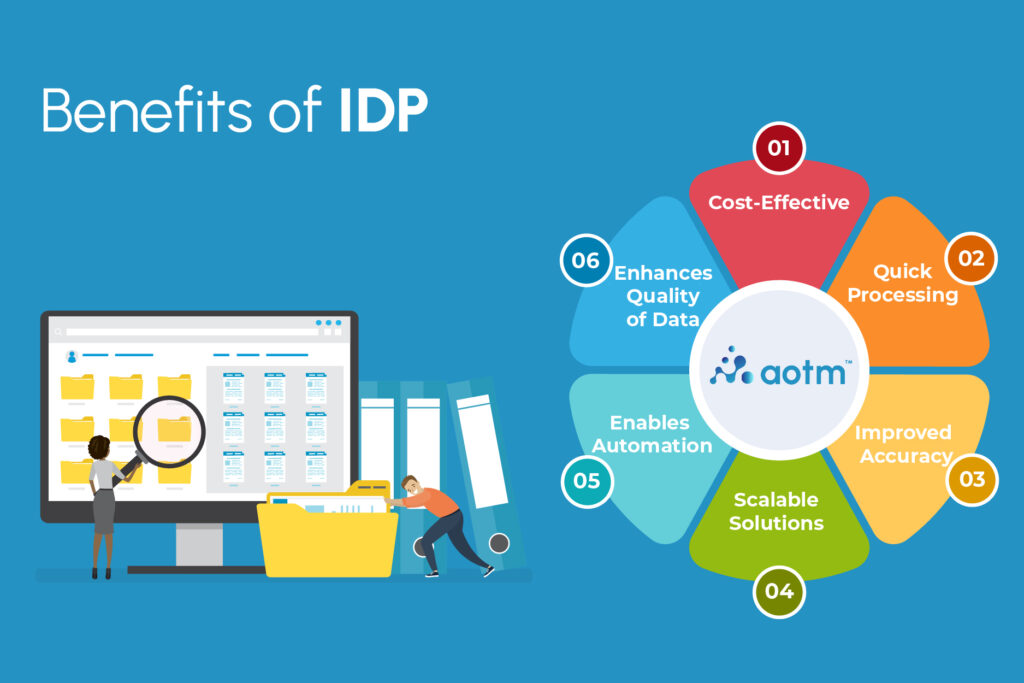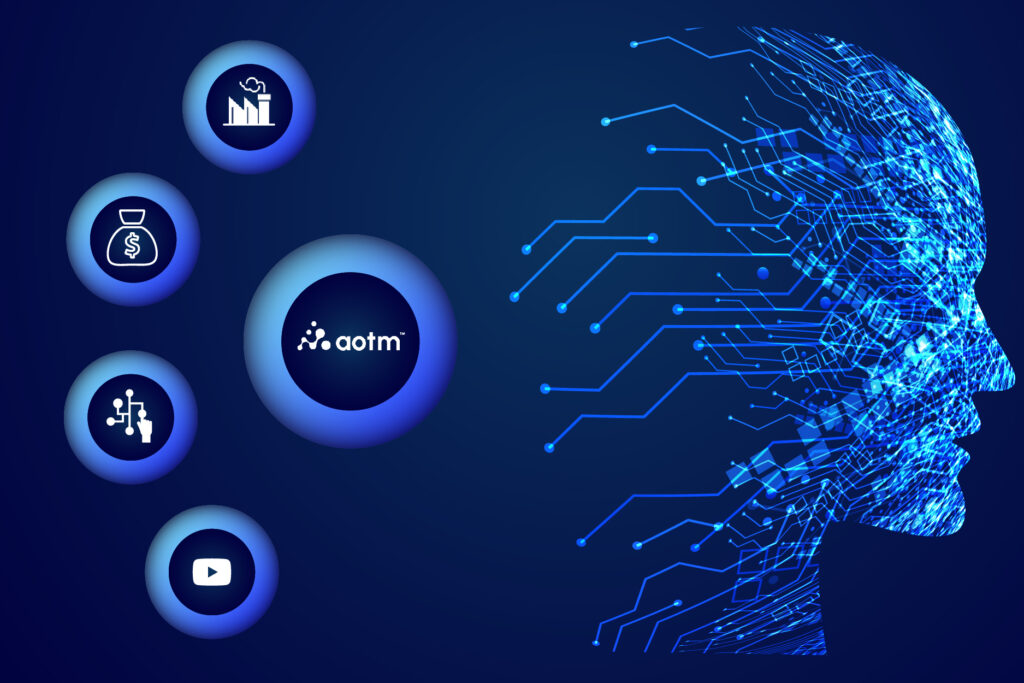Intelligent Document Processing: A Detailed Guide
AOTM
Did you know more than 80% of enterprise data is unstructured? Yes, you read that right. A common challenge most companies face is a large volume of data that goes unprocessed daily due to its unstructured or semi-structured nature.
While there are traditional methods of processing data, they have proven to be expensive, time-consuming, and prone to many errors. Hence, companies have now turned to Intelligent Document Processing (IDP). You must wonder what Intelligent Document Processing is; let us explore that in the following sections.
What is IDP?
Intelligent Document Processing (IDP) eliminates the need for manual data extraction by replacing it with machine learning and AI-based technologies. With the help of these technologies, IDP extracts data from documents automatically and converts semi-structured or unstructured data to structured data that companies can use for various purposes.
To automatically extract data, IDP uses different solutions such as Computer Vision, Optical Character Recognition (OCR), Natural Language Processing (NLP), Human in the Loop, and much more. Apart from data extraction, IDP also ensures that the extracted data is categorised, classified into relevant categories, and is simultaneously validated.
More often than not, IDP is often mistaken for OCR and vice versa. However, this is not true. Let us look at the differences between IDP and OCR to help us differentiate between the two.
Before we understand the differences between OCR and IDP, let us look at the various ways data extraction takes place. There are three ways in which data can be extracted — Manual Data Extraction, Optical Character Recognition (OCR), and Intelligent Document Processing. The least preferred of the three is manual data extraction, which proves to be cumbersome and prone to many errors. The following preferred choice is optical character recognition. You must wonder what optical character recognition is; we will give you a brief explanation below.
What is OCR?
Optical character recognition assists in converting a scanned image into text by transcribing each character found on the image. In short, OCR extracts the text it detects on an image and converts it into readable information for its user.
There are two kinds of OCR — template-based OCR and zonal OCR. With template-based OCR, you can easily extract any information from a template-based document. On the other hand, the zonal OCR detects blocks of text or a ‘zone’ of the document and extracts data from the same. However, there is a downside to using OCR for data extraction.
While OCR works well with a template-based document, any slight variation in the template leads to an unsuccessful data extraction through OCR.
OCR’s limited scope cannot cater to semi-structured and unstructured documents. To help overcome these limitations, companies have turned to IDP. Now, let us understand the differences between OCR and IDP.
OCR vs IDP
The key differences between OCR and IDP are as follows:
| Key Differences | OCR | IDP |
| Scope | Caters to template-based documents. | Can extract and process data from template-free and complex documents. |
| Accuracy | Data processed by OCR has to be manually verified as it can be prone to errors. | IDP is almost error-free as it uses HITL technology to validate the data extracted automatically. |
| Automation | Cannot extract data from handwritten documents or legal documents such as contracts. | IDP uses AI technology to adapt itself to extract data from multiple templates and layouts. |
| Capability | OCR is limited to data extraction; it does not perform any additional functions. | IDP extracts data and classifies the extracted data into relevant categories and simultaneously validates it. |
As you can see from the above table, Intelligent Document Processing has proven to be more efficient than traditional OCR. However, despite its limited functionality, traditional OCR should not be overlooked. Many companies use OCR combined with Intelligent Document Processing solutions to achieve optimal results. Now let us explore the benefits of IDP.
Benefits of IDP

We have a fair overview of Intelligent Document Processing and how it works; let us now examine the key benefits of using Intelligent Document Processing solutions. The key benefits of IDP are as follows:
- Cost-Effective
Running on a fixed budget is crucial for any business. However, document processing can prove to be expensive as it requires a large number of people. With Intelligent Document Processing solutions, you can eliminate the need for manual verification as they assist you in quickly processing, classifying, and validating data. Hence, as an organisation, if you choose to employ IDP solutions, you are bound to reduce the cost of document processing by 50% or more in a year.
- Quick Processing
Data extraction can get painfully excruciating when there is a large volume of data that has to be processed. It is because manual data processing can be time-consuming and cumbersome. However, Intelligent Document Platform platforms and solutions have tackled this issue by employing AI and machine learning technology to process and classify data quickly. With IDP, you can save about 50% to 70% of document processing time.
- Improved Accuracy
As mentioned above, IDP solutions eliminate the need for manual processing or verification of data. Hence, there is no room for human error, and the data extracted is almost 99% accurate. IDP ensures that data extraction processes are quicker and more accurate than before.
- Scalable Solutions
A common challenge with manual data processing or traditional OCR is that they cannot extract data from various sources such as handwritten documents, receipts, contracts etc. IDP solutions tackle these issues as it uses its AI and machine learning capabilities to adapt itself to extract data from various sources and documents of different sizes and layouts. It not only extracts data but also interprets the information found on a specific document.
- Enables Automation
Most companies lose a fair amount of time performing mundane day-to-day tasks. Everyday tasks can get monotonous and may even disrupt the workflow. With Intelligent Document Processing platforms, you can help simplify data processing by automating daily, mundane tasks integral to a smooth business workflow.
- Enhances Quality of Data
Almost 80% of data is unstructured, making it inaccessible. Yet another benefit of Intelligent Document Processing solutions is that it enhances the quality of data once extracted from its source. Hence, IDP solutions assist in extracting data, structuring extracted data, and improving data quality. In this manner, IDP solutions convert unstructured, inaccessible information into structured, readable, and accessible information.
It is safe to say that IDP solutions aim to set up an efficient business process in place to ensure smooth business operations. Let us now look at how IDP solutions or platforms assist various industries.
How Does IDP Assist Various Industries?

You now understand how Intelligent Document Processing solutions work and how they can benefit you. But the pertinent question is, how can IDP solutions help your organisation or business? Intelligent Document Processing platforms and solutions help organisations and businesses in more ways than one. However, how IDP solutions assist your business varies from industry to industry. Here is how IDP solutions adapt to each industry:
- Healthcare Industry
The healthcare industry houses a large volume of data, from medical test forms and test results to prescriptions and bills. Most of the data in this industry are categorised as semi-structured or unstructured as they come in various formats, layouts, and sizes. IDP solutions can classify the data extracted from multiple sources into relevant categories and automatically verify the data. Besides, IDP solutions can help automate daily tasks such as patient onboarding, scheduling appointments, invoice processing, etc. and integrate them into medical records, financial records, and hospital information systems.
- Insurance
Yet another sector that possesses large volumes of data is insurance. Most insurance claim forms consist of data fields that have to be verified. Besides, you must submit supporting documents such as invoices, receipts, and statements to claim insurance. While insurance officers verify all the documents to process the insurance claim, manual verification may be time-consuming and prone to errors. IDP solutions can simplify the processing of insurance claims by automated document processing that ensures 99% accuracy and leaves no room for error. Additionally, insurance companies can employ IDP solutions to validate data on accident claim forms, life insurance applications, car insurance applications, and more.
- Banking and Financial Services
Banking and financial services are the ones to benefit the most from IDP solutions. Many people despise going to banks or other financial institutions as they spend a lot of time waiting in long queues. This is because most financial institutions have staff manually filling out applications and feeding data into the system. However, loan application forms, tax forms, bank statements, mortgage applications, KYC processing, etc., can be processed quickly and efficiently with IDP solutions. Moreover, the data extracted can be categorised and instantly validated. Additionally, banks can automate their daily workflow and elevate their customer experience with IDP solutions!
We have given you a detailed overview of how Intelligent Document Processing solutions work, the differences between IDP and OCR, the benefits of using IDP solutions, and how they can benefit each industry.
Are you now wondering how to choose the best Intelligent Document Processing platform for your business or organisation? You have come to the right place! AOTM is an Intelligent Automation Platform that offers custom, ready-to-use solutions that you can easily integrate into your business workflow. Businesses or organisations can alter AOTM’s IDP solutions based on their business needs. Moreover, you can efficiently automate your business processes by employing AOTM’s IDP solutions. So, what are you waiting for? Book a free demo today and explore what AOTM has to offer!
